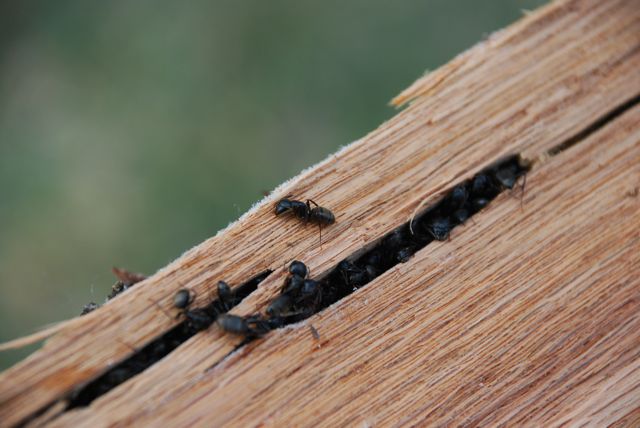My pet Camponotus grow into 6-legged racing cars when temperatures rise above 30°C and their development rate speeds up immensely. They can easily rival spiders and even perform small jumps, similar to those that Huntsman spider do. They also get more keen and aggressive, too.
Temperature influence would be a really cool thing - if it's colder most arthropods and amphibians/reptiles move and act at much lower speed (even deadly fungus would develop slower and aphids gave less honey dew). Even the brood development time could be affected.
Some animals - and even individual ant species - would be more affected than others which could make fights easier or harder depending on which species you fight and which ants you breed.
It would allow to give certain levels (preferably the first ones like the tutorial and the first campaign missions at the colder coast area) a slower pace and could even be a cool global modifier for skirmish and multiplayer games.
Furthermore hotter and colder spots could be implemented with hotter spots allowing for faster brood development and faster honey dew production in aphids which both are essential to outcompete and overrun the enemy.
That would actually allow for strategic positions on a map where fights cluster up as competing colonies fight for these valueable assets (like a big stone with a warmer area underneath it).
It would even be possible to task workers with "brood heating" (like ants in the wild in fact do) where they crawl out to a sunny place (in desert levels that might just be around the entrance but in other levels sunny spots might be rare and harder to find), absorb heat and then go back to buff brood tiles so the larvae develop faster (just place a group marker at a sunny spot and the ants will patrol between the sunny spot and the brood tiles).
That would also give idle workers a task and increase the traffic within the colony so it looks more like a natural ant colony.
Temperature influence would be a really cool thing - if it's colder most arthropods and amphibians/reptiles move and act at much lower speed (even deadly fungus would develop slower and aphids gave less honey dew). Even the brood development time could be affected.
Some animals - and even individual ant species - would be more affected than others which could make fights easier or harder depending on which species you fight and which ants you breed.
It would allow to give certain levels (preferably the first ones like the tutorial and the first campaign missions at the colder coast area) a slower pace and could even be a cool global modifier for skirmish and multiplayer games.
Furthermore hotter and colder spots could be implemented with hotter spots allowing for faster brood development and faster honey dew production in aphids which both are essential to outcompete and overrun the enemy.
That would actually allow for strategic positions on a map where fights cluster up as competing colonies fight for these valueable assets (like a big stone with a warmer area underneath it).
It would even be possible to task workers with "brood heating" (like ants in the wild in fact do) where they crawl out to a sunny place (in desert levels that might just be around the entrance but in other levels sunny spots might be rare and harder to find), absorb heat and then go back to buff brood tiles so the larvae develop faster (just place a group marker at a sunny spot and the ants will patrol between the sunny spot and the brood tiles).
That would also give idle workers a task and increase the traffic within the colony so it looks more like a natural ant colony.

